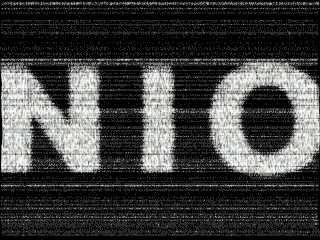Autumn
While a dark tunnel dominated by polluting cars is not the first thing that comes to mind when thinking about a park, our tunnel proposals for NoMa do what all good urban parks do: they offer a moment of openness, a space to breathe, and a place where thoughts can drift away… Our tunnel proposals take unpleasant and desolate spaces and instead offer intimate almost theatrical environments, each of four with its own sensory experience. We begin with K Street as Winter, the essence of a damp, crisp cold winter day in black and white. L-street stands for Spring; the inhalation of fresh air with standing rays of sunlight that are falling through the young leaves, then M Street as Autumn – the physical experience of a rainy day with dynamic skies and wind . And finally Florida Avenue as Summer, a sense of hot sunlight with hard shadows, trembling air and mirages. Together they are quartet of contrasts, each memorable, dynamic, and compelling.
Autumn, M-street
During a cool breezy fall when the sky opens up with a downpour, usually the easiest place for respite is the tunnel. In our L Street tunnel, however, the inside rains with light – a fixed bright pointillist plane that turns a dark roof into a glowing field. The interior of this tunnel radiates with tiny curtains that shift as you move through them like a set of waterfalls that stop above you. Looking up into this environment shifts the expectation of a dark and damp tunnel ceiling into a place you want to be. The light varies over this field so that you see a still effect of waves.
The dynamics in the light intensity in tunnel L is caused by 2 parameters — its own rhythm and the movement of cars. We deliberately didn’t connect the interactivity of the lights with the pedestrians. First of all because we believe that we have to be cautious with interactivity in public space. We are surrounded every day with all kinds of tools (screens, buttons, smartphones) that provoke interactivity. Our adaptability to these tools is much higher than we are sometimes conscious of and a direct relation between pedestrians and installation would expire very quickly. Second, we strongly believe that when a (public) space has a life of its own or has a kind of virtual inhabitant, one would consider him/herself much more as a guest. This respectable distance between host and guest has its effect on the behaviour in public space in general and on vandalism in particular.
We have defined 4 patterns that run through the light, depending on the time in the day or on the car traffic. All LED lights are always turned on for 50%, day and night. A movement through the light is accomplished by a temporary increase of the light to 100%. The difference between normal and intense light cannot be too big, to avoid distraction for the car drivers.
- At night, when most of us sleep, the tunnel has a very slow pulse. When there is no one in the tunnel, every 20 seconds a linear wave rolls from the middle of the tunnel towards both ends.
- At daybreak, this movement turns into a slightly faster – every 10 seconds – radial pulse. The tunnel gets awake and becomes a bit more self-centred.
- Then, when a car rides through the tunnel, it produces a wave, like the slip stream of a boat. This wave interferes with the rhythm of the pulse. When more cars enter the tunnel, the multiple waves create a twinkling effect. The speed of the cars is measured at both starts of the tunnel by 2 presence sensors.
- At some point, probably during rush hours the roads in the tunnel will be filled with cars, most of the time standing still. At this point the light will withdraw itself to the vaults of rods. Every vault produces its own pulse, simultaneously. This pattern emphasizes the cramped space of the tunnel.
Normally, the presence of cars in a tunnel is not appreciated by pedestrians; they cause noise and exhaust. In this tunnel, pedestrians will welcome cars to contribute to the glistening effect above their heads.




